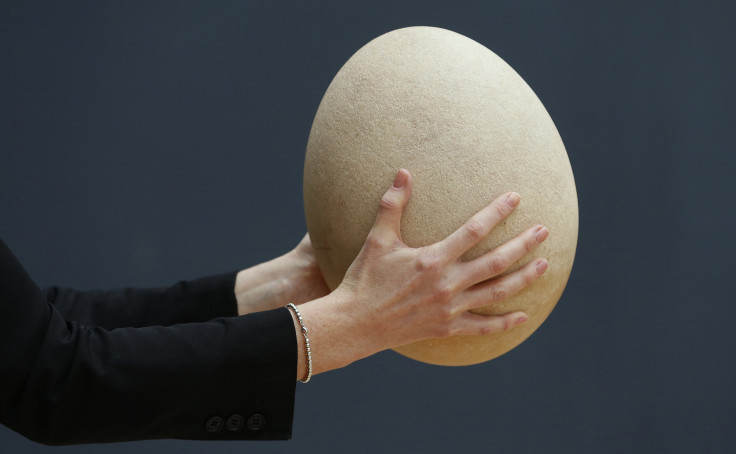Gigantic Egg Of Extinct Elephant Bird Found Intact In Museum Storage
In a recent surprise discovery, staffers at New York’s Buffalo Science Museum came to know that a giant replica of an elephant bird egg stored in their collection was actually a real specimen.
As the massive, flightless bird, hailing from the island of Madagascar, went extinct hundreds of years ago, curators at the museum never wondered about discovering a real egg and mislabeled it as a model for their collection.
However, while updating the catalog artifacts, the error came to notice. “I tried to shrug it off, but the more closely I looked at the surface of the eggshell and felt the weight of the egg, the more I kept thinking this has to be real,” Paige Langle, who discovered the egg sitting inside a cabinet, told the Smithsonian. Follow-up studies by radiography experts not only confirmed the authenticity of the museum egg, but, also revealed it had the sub-fossilized embryo of a baby elephant bird inside.

The 12-inch long egg weighs around three pounds and is perfectly intact. Till date, not even 40 intact or near-intact eggs of the long-extinct bird have been identified around the globe. According to the Museum’s record, the egg they discovered was acquired from Edward Gerrard and Sons, a London-based firm involved in taxidermy specimen trading, in 1939. They also found a letter that hinted the museum had reached out to a number of dealers back in the day to collect rare objects for a bird-exhibit.
“Lost, hidden or misidentified artifacts and specimens are not uncommon in museums that have been collecting for centuries, and we are thrilled to rediscover this rare egg in our collection,” Director of Collections Kathryn Leacock told ABC affiliate WKBW. “The Buffalo Society of Natural Sciences has been collecting since 1861, and as we continue to care for the collection, there is always more to learn and discover.”
That said, the latest discovery holds major importance for paleontologists looking into the history and life of the long-extinct bird. Elephant birds looked a bit like modern-day emus and ostriches and used to be as much as 10-feet long and a whopping thousand pounds heavy. A single elephant bird egg was equal to about 150 chicken eggs and they were the biggest among all vertebrate eggs, including that of dinosaurs.
However, the birds could not thrive for long and died out during the 1600s. This was mainly because of changing environmental conditions and feeding habits of human settlers on the island. A single egg of the rare bird made a better, bigger source of food than chicken eggs, prompting humans to rob their nest and driving the species towards extinction.
© Copyright IBTimes 2024. All rights reserved.




















